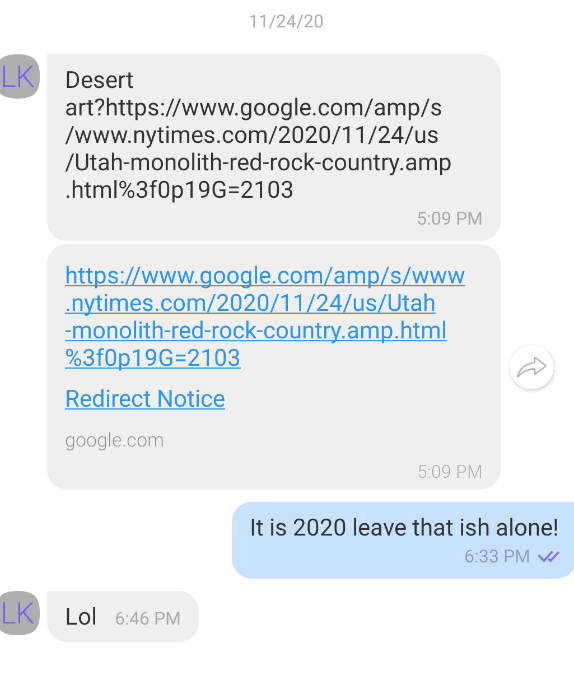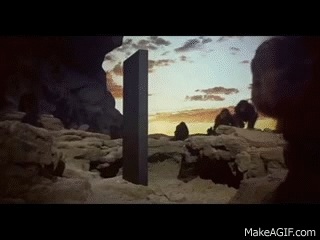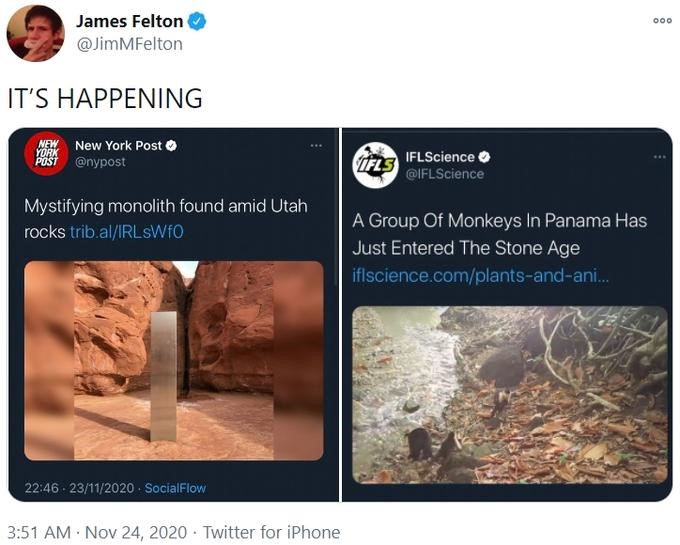
So. When one lives in Utah and writes about aesthetics and someone drops a metal monolith into the middle of nowhere somewhere near Bears’ Ears, one is going to hear about it.

Dubbed the “monolith” (props to the Salt Lake Tribune for fussily but correctly insisting that it’s an obelisk), the triangular metal prism stood about ten feet tall. According to Google Earth images searched after Reddit found the location, the monolith was installed by someone in the late summer of 2016. Forty-eight hours later, of course people had hiked to see it and of course they’d put it on Instagram.
But what should we make of it as art? The reaction to the monolith reminded many philosophers of art of Tilted Arc, Serra’s metal sculpture similarly located in a place where it didn’t seem welcome. The reaction of the public to Tilted Arc, however, was recorded as mostly negative (see Gregg Horowitz on the sociopolitical controversy). Another alternative: the monolith is as some kind of guerilla street art, breaking the boundaries of galleries and museums. Not a bad proposal: the monolith is both illicit and audacious. Don’t go dropping obelisks in national parks! But it doesn’t seem like its location is intrinsic to its meaning, and not to put too fine a point on it, it’s not in the street.
Here’s my proposal: think of the monolith as a monument, an artwork addressed to a group. Monuments typically embody commitments to principles, ideals, or a group memory; they are, as Thi Nguyen observes, vessels for group expression, art as a way that groups can talk to themselves.

But what could the Utah monolith embody?
Let’s start with its shape. Obelisks in ancient Egypt stood at the entrances of temples, likely symbolizing the power of the sun (or, more cynically, the power and wealth of whoever could get other people to put up a giant stone pointy thing). They’ve been characterized as mysterious and opaque, in part due to Western cultural practices exoticizing ‘lost’ Egypt, but also in part because the shape itself is something of a blank slate. Obelisks are comparatively opaque, revealing nothing of the artist or their intentions. As a result, their meaning is flexible, which is why the same shape that graced Egyptian temples could plausibly memorialize George Washington, thousands of years and half a planet away, and why Arthur C. Clarke could choose an obelisk as the alien artifact which spurred human evolution in 2001: A Space Odyssey.
Let’s suppose then that obelisks derive their meaning from whatever the society that maintains and celebrates them decides they mean. Now have a mini obelisk of unknown provenance dropped the middle of a forgotten spot in Bears’ Ears.
When it was revealed to the world, we determined its meaning. And we responded with memes.

Memes are open-ended and owned by no one in particular. Because of that, by creating or sharing a meme, according to Anthony Cross, users join in the collective authorship of the meme. Like inside jokes, memes establish and define intimacy. In a year where virtual and online spaces have become central in the creation and maintenance of communities, memes help us connect not just with others far away online, but even close friends with whom one must be physically distant.

There is an artwork here, but it’s not in the steel. It’s in what the community online made of it, four years after it was planted. The Utah monolith, opaque and mysterious, shows up in the wild, and the online world, tired of COVID and abundances of caution and lockdowns and masks and online school and unprecedented times and hand sanitizer and (if you’re in Utah) earthquakes, treats it as a chance to reflect on the absurdity of 2020.
Absurdity dictates, that, of course an obelisk would be discovered this year, and not a hundred years ago in 2019. Of course we’d make jokes about aliens in a year that also featured murder hornets. Of course when locals removed the obelisk, fearing that tourists would damage the petroglyphs that surrounded it, they left behind a cheeky little pyramid.

And of course, there’s now another monolith in Romania. One must imagine Sisyphus laughing.



